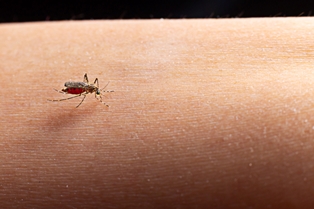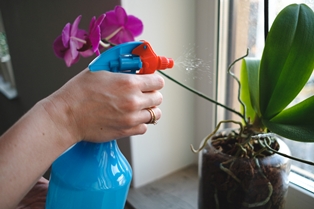Gnats are tiny, flying insects that can become a major nuisance in households. Despite their small size, they can quickly multiply and infest various areas of your home. In this article, we’ll explore the different types of gnats, how to identify an infestation, the problems they can cause, and most importantly, effective ways to get rid of them.

Understanding Gnats
What Are Gnats?
Gnats belong to the Dipterid suborder Nematocera and are characterized by their small size and delicate appearance. They are often mistaken for fruit flies due to their similar size and behavior. However, gnats are attracted to moisture and organic matter, making them more common in damp environments such as kitchens, bathrooms, and gardens.
Types of Gnats
There are several types of gnats, each with its own unique characteristics and habits. Some of the most common types include fungus gnats, which are attracted to decaying organic matter and can be found in soil and compost, and fruit flies, which are drawn to ripe fruits and vegetables.
Identifying Gnat Infestations

Signs of Gnat Infestation
Identifying a gnat infestation early is crucial for effective control. Common signs include:
- Persistent presence of small, flying insects, especially around drains, sinks, and potted plants.
- Dark spots on surfaces such as walls, windowsills, and countertops, which are gnat feces.
- Presence of larvae in moist areas like soil, compost, and standing water.
Why Gnats Are a Problem
Gnats may seem harmless, but they can pose several problems for homeowners:

Health Risks
Gnats can carry and transmit diseases and bacteria, contaminating food and surfaces in your home. This poses a risk to your health and can lead to illnesses if not addressed promptly.
Property Damage
Certain types of gnats, such as fungus gnats, can cause damage to plants by feeding on their roots and soil. Additionally, the presence of gnats can be a sign of underlying moisture issues or organic decay, which can lead to structural damage if left unchecked.
Preventive Measures
Taking proactive measures to prevent gnat infestations is essential for maintaining a pest-free home environment:
Keep the House Clean
Regularly clean and disinfect surfaces, especially in areas prone to moisture and organic matter buildup, such as the kitchen and bathroom. This helps eliminate potential breeding grounds for gnats and other pests.

Seal Entry Points
Seal cracks and crevices around doors, windows, and pipes to prevent gnats from entering your home. Use caulking or weather stripping to seal gaps and openings, and repair any damaged screens or vents.
Properly Store Food and Garbage
Store food in airtight containers and dispose of garbage regularly to prevent gnats from being attracted to food scraps and organic waste. Keep outdoor trash bins clean and tightly sealed to avoid attracting pests.
Natural Remedies
Several natural remedies can help control gnat infestations without the need for harsh chemicals:
Apple Cider Vinegar Trap
Create a simple gnat trap by filling a bowl with apple cider vinegar and adding a few drops of dish soap. The gnats will be attracted to the vinegar scent and become trapped in the soapy solution.
Essential Oils
Certain essential oils, such as peppermint, lavender, and eucalyptus, have natural insect-repellent properties. Dilute a few drops of your chosen oil in water and spray it around areas where gnats are present to deter them from returning.
DIY Gnat Spray

Mix water with a few drops of dish soap and a splash of vinegar in a spray bottle to create a homemade gnat spray. Use this solution to directly spray gnats and their breeding areas, such as soil, plants, and drains.
Chemical Solutions
For severe gnat infestations, chemical solutions may be necessary:
Insecticides
Choose an insecticidal spray or fogger specifically formulated to kill gnats. Follow the manufacturer’s instructions carefully and use caution when applying chemicals indoors. Ventilate the area thoroughly after treatment to ensure the safety of occupants and pets.
Gnat Traps
Purchase commercial gnat traps or sticky tape to capture gnats effectively. Place the traps near areas of high gnat activity, such as sinks, drains, and windows, to attract and trap the insects.
Professional Help
If DIY methods fail to control the gnat infestation, consider seeking professional pest control services:
Pest Control Services
Experienced exterminators can assess the extent of the infestation and recommend targeted treatment options to eradicate gnats from your home. They have access to professional-grade products and equipment that may be more effective at eliminating stubborn infestations.
FAQs About How to get rid of gnats in the house quickly
One effective method to kill gnats instantly in the house is by creating a homemade gnat trap using apple cider vinegar and dish soap. Simply fill a bowl with apple cider vinegar and add a few drops of dish soap. The gnats will be attracted to the scent of the vinegar and get trapped in the soapy solution, ultimately leading to their demise.
While completely getting rid of gnats in just 5 minutes may be challenging, there are some quick measures you can take to reduce their population. One method is to quickly dispose of any visible sources of attraction, such as overripe fruits or open garbage bins. Additionally, you can use a vacuum cleaner to quickly suck up any gnats flying around your home.
Gnats are repelled by certain scents, including those of essential oils such as peppermint, lavender, and eucalyptus. You can create a natural gnat repellent by diluting a few drops of these essential oils in water and spraying it around areas where gnats are present. Alternatively, the scent of citrus fruits like lemon and orange can also deter gnats.
Several factors can contribute to an increase in gnat activity in your house. Gnats are attracted to moisture, organic matter, and decaying materials, so having overripe fruits, damp soil, or standing water indoors can attract them. Additionally, poor sanitation and hygiene practices, such as leaving food uncovered or failing to clean up spills, can create ideal breeding conditions for gnats. It’s essential to identify and address the underlying cause of the gnat infestation to effectively reduce their numbers in your home.
Conclusion
Dealing with a gnat infestation can be frustrating, but with the right approach, you can effectively eliminate these pests from your home and prevent future outbreaks. By implementing preventive measures, using natural remedies, and seeking professional assistance when needed, you can enjoy a pest-free living environment and protect your health and property from the dangers of gnats.





